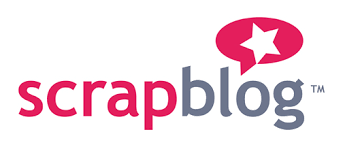======
[1] How do my students find info in their Digital World?
Part of "Making Meaning in a Digital World" is the question of where to find information. (Google it? Wikipedia? What's reliable?)

Who has the answers?
A feature of the new digital landscape is that the answers are not just in the teacher's head; students with a cell phone, an ipod or a laptop can get the "facts" in moments. Of course, we need to teach them to be critical consumers of the info, and help them to be more savvy "googlers". "Can I believe that medical page? that white supremacy page? that government conspiracy page? that alien sighting page?" Can students trust the results of a Google search? Of course, we can teach better search engine skills. But maybe there's more.
Can't I Google it all?
Some reports maintain that only 1% of the web is visible via a Google search, and that the rest is hidden behind firewalls or paywalls. There are great databases out there, but unless you subscribe, you can't get in. However, as part of a package negotiated by ERAC, every BC student now has access to WorldBook on-line (tutorial here) and the EBSCO periodical database (tutorial here).
We spent some time in the session looking at all three levels of Worldbook: a great "neutral" resource that students can use to "get the facts." WB is a good jumping off point that "free" resources can be measured against. (ie Wikipedia or Google results.) EBSCO also comes in three difficulty levels and can be searched by date, Lexile and publication type. Using these resources is all part of building background knowledge.
[2] Essential Question or Trivial Pursuit?
Finding the information is only the first step. Students need a reason for their work. Take a look at the "From Now On" site to see what the author has to say about the role of the Essential Question in designing lessons and units.- (fno - Essential Question). The Coalition of Essential Schools also talks about the importance of setting the question: (another link). We need to be able to answer the "So What?" that springs to mind when we look at reams of information. I can teach my students to memorize dates, events, formulas, names: so what? How can we make it important, relevant, engaging and so on? Here's a link to some "Understanding by Design" material: UbD.
 Lorraine has kindly included page 1 of a planning template she is developing to help teachers and teacher-librarians think about what will go into a lesson or unit of study. (Click on the graphic on the left.)
Lorraine has kindly included page 1 of a planning template she is developing to help teachers and teacher-librarians think about what will go into a lesson or unit of study. (Click on the graphic on the left.)[3] Representing student learning.
 There are many tools that allow students exciting ways to represent their learning. "Scrapblog" lets students use a very visual medium that allows for the incorporation of text. (The finished product can then be posted to a blog, or webpage, used in a gallery walk, pasted into a PPT, etc!) Students are able to share their work with each other for comment, with other classes, with relatives around the world. Of course, whatever medium is chosen, it is how the final task is embedded in the context of the Essential Question that makes it more than a fancy cut and paste exercise.
There are many tools that allow students exciting ways to represent their learning. "Scrapblog" lets students use a very visual medium that allows for the incorporation of text. (The finished product can then be posted to a blog, or webpage, used in a gallery walk, pasted into a PPT, etc!) Students are able to share their work with each other for comment, with other classes, with relatives around the world. Of course, whatever medium is chosen, it is how the final task is embedded in the context of the Essential Question that makes it more than a fancy cut and paste exercise.See you next session.